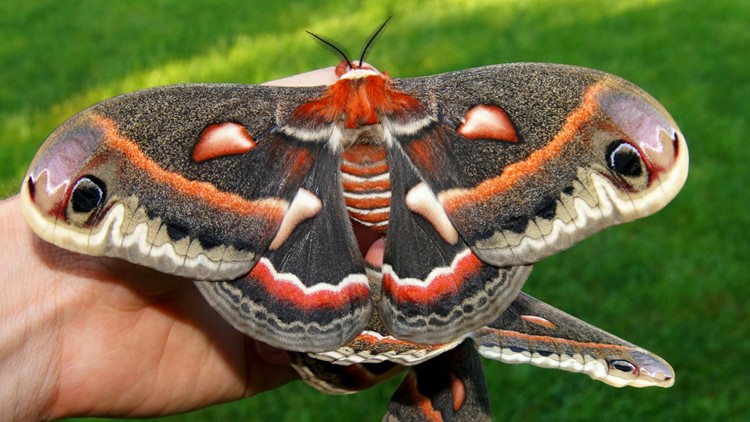GRAND RAPIDS, Mich. — Michigan's largest moth is also North America's largest moth and it can be found as far north as the lower providences of Canada and as far south as Florida.
The hyalophora cecropia moth—commonly referred to as a cecropia moth—is a member of the Saturniidae family of moths, which are prized for their large size and appearance.
Adult cecropia moths' wingspans can be up to seven inches
The adult stage of the cecropia moth is actually the shortest stage of the insect's life, only lasting around 10 days.
Adult cecropia moths only have one goal, to mate and lay their eggs. This sole purpose is reinforced by the adult moth's lack of a digestive system and non-functioning mouth. That's right, the adult moth can't eat.
The entire lifespan of the cecropia moth is about a year in length and begins in the egg stage.
Cecropia moth egg and larvae stages
Cecropia moths begin their life as small reddish and brown eggs, laid by a leaf by female adults at the end of their lifecycle.
After the eggs hatch, the insects enter their larvae stage, which is comprised of five different stages called instars. During the first instar, the larvae looks like a small black caterpillar with hairy looking spines on its back.

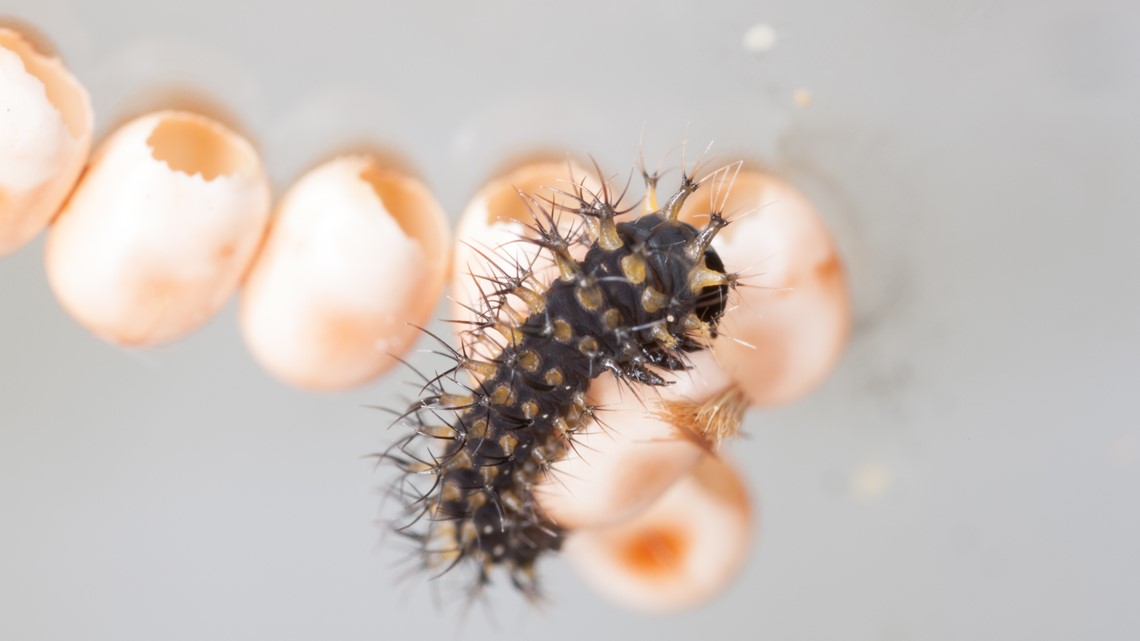
Each of the different instars last around a week, with the entire larvae stage of the insect lasting for a few months in total.
The second and third instars of the cecropia moth can include slight color variations as the insect's body slowly turns green and its spines change into bright colors.
The larvae spend most of their time eating leaves and preparing for the pupae stage of their lives.

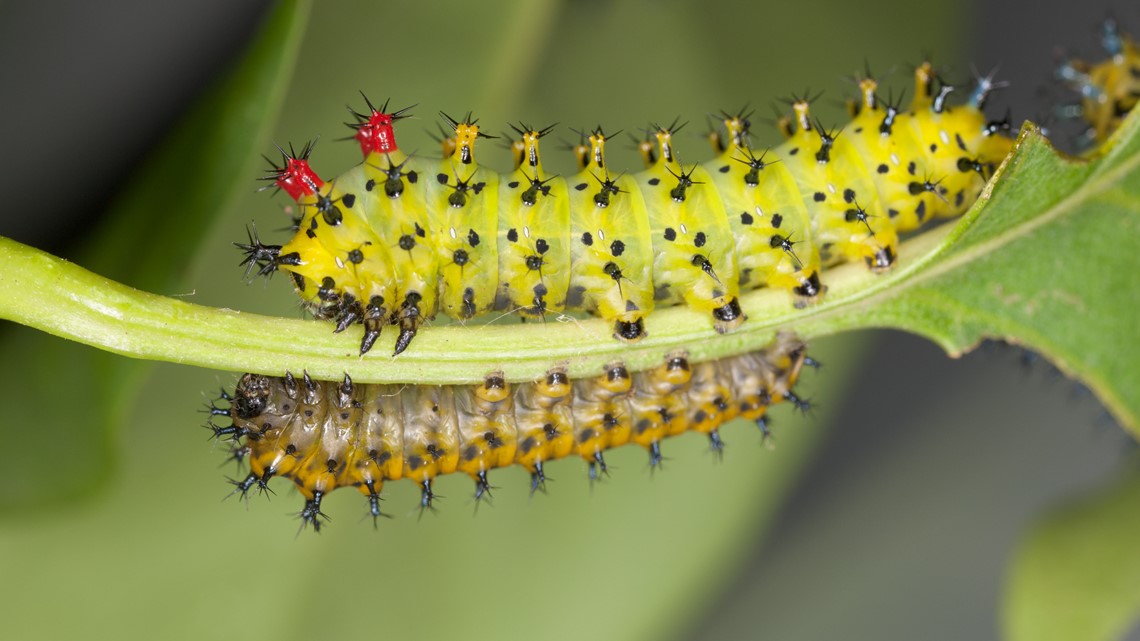
As the cecropia moth moves into the fourth and fifth instars, the insect becomes more colorful as its spines begin to change color to bright oranges, reds, blues and yellows. The insects size also increases as they continue to gorge on leaves during the final few weeks of its life as a larvae.

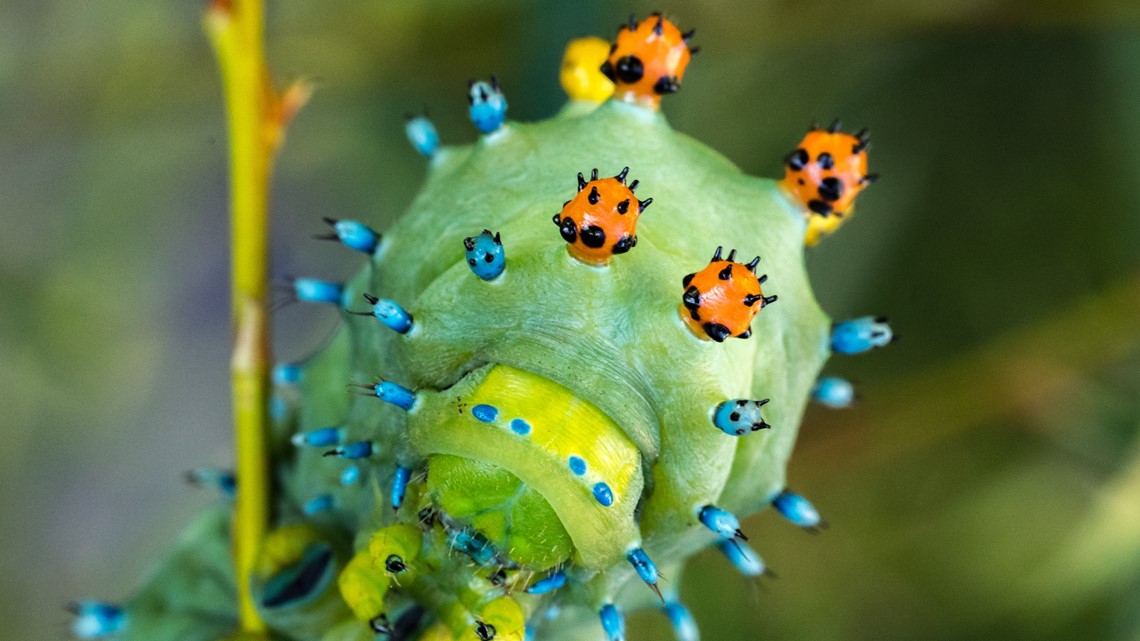
When the cecropia moth reaches the fifth instar, it can be up to almost five inches in length. Once it is in its final instar, the insect will continue to eat as much as it can for about a week or two, before creating its cocoon and entering into its pupae stage.

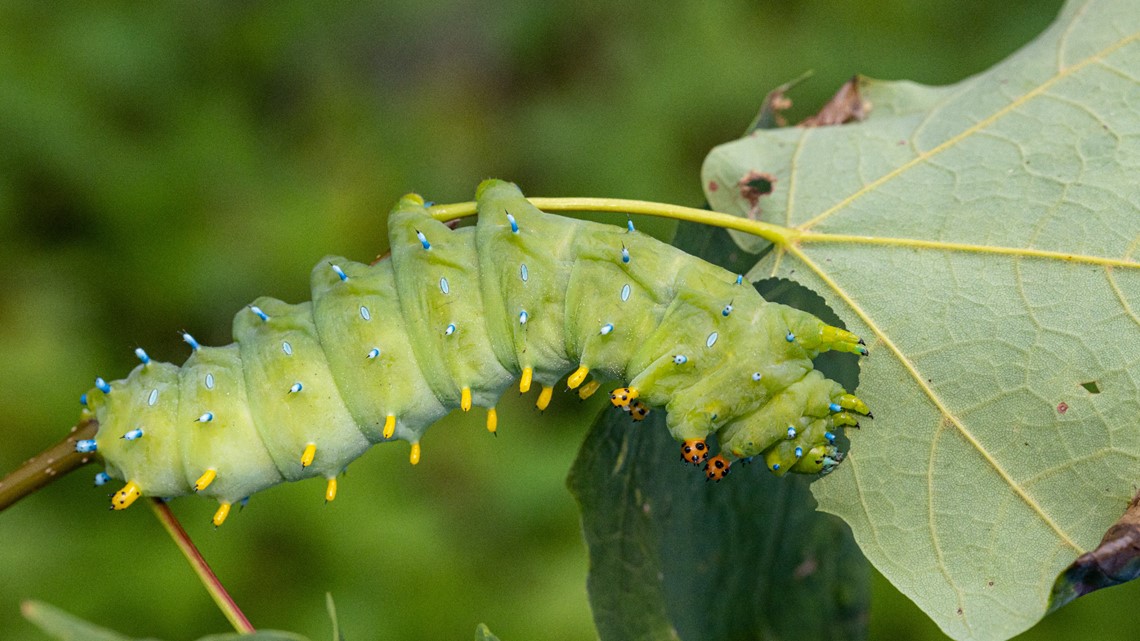
Cecropia moth pupae stage
The cecropia moth's pupae stage is the longest stage of its life, lasting for several months during the late summer, fall, winter and early spring. The cecropia moth will spin its cocoon after it completes in larvae stage and will stay inside until the following spring once the weather warms up.

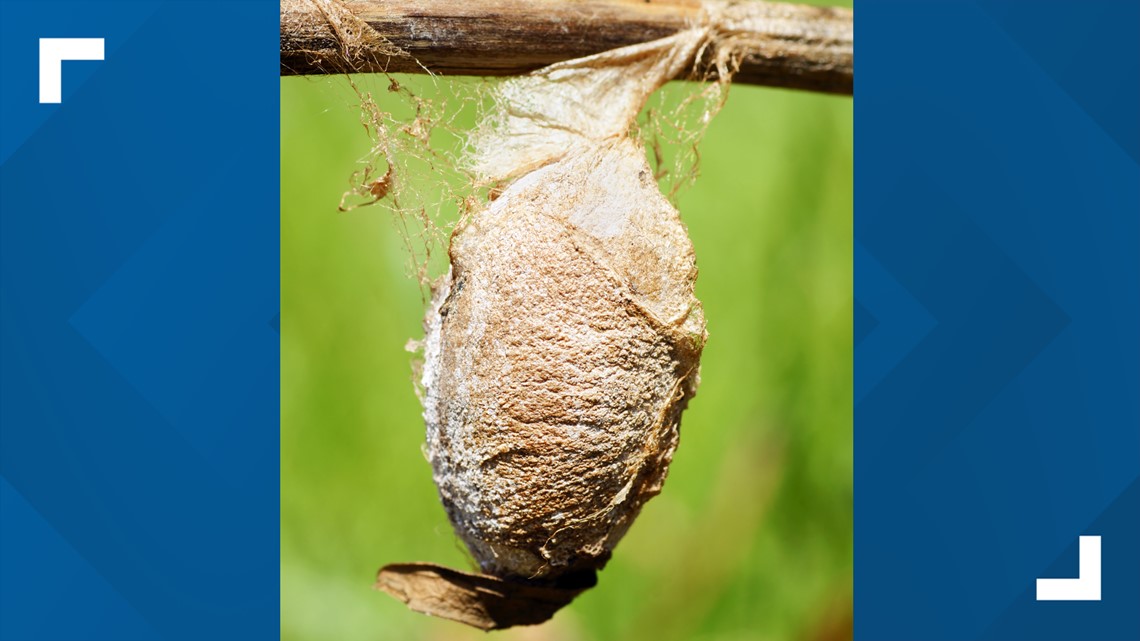
Cecropia moth adult stage
The final stage of the insects life is also its shortest, lasting only a week or two as the adult cecropia moth finds a mate and females lay their eggs on leaves.
The female moth emits pheromones that attract males at a distance up to a mile away. After the moths mate, the female will lay up to 100 eggs.
The males can be distinguished from the females for their larger antennae and their smaller abdomens.

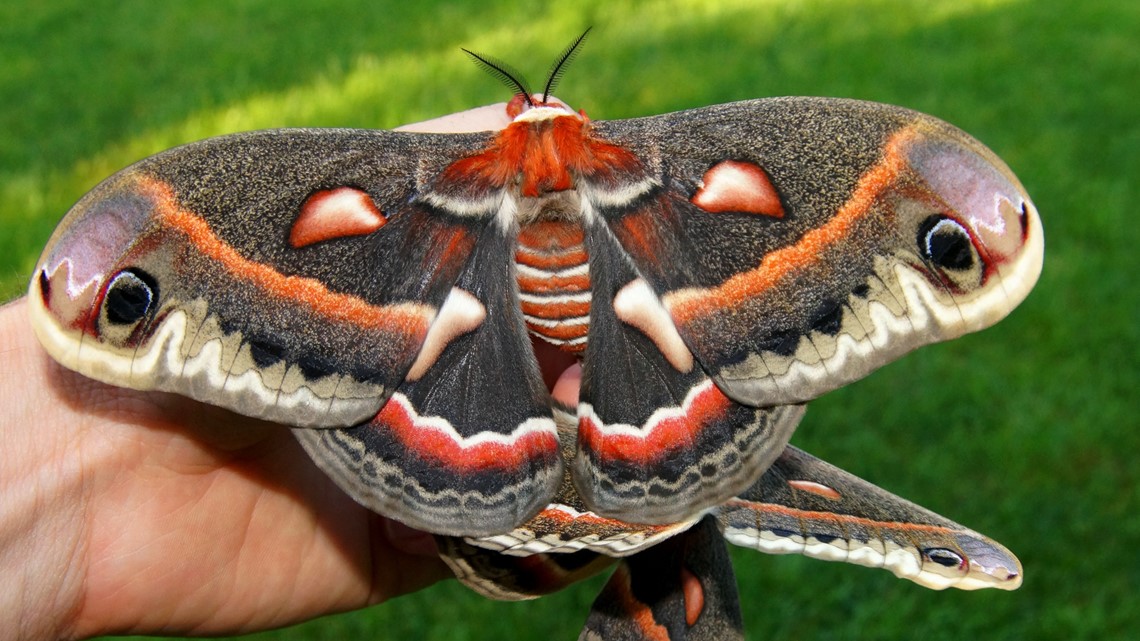
If you are lucky enough at spotting one of the beautiful moths in their adult stage, just know that not everyone gets a chance to see one up close and personal.
Sources use in this article include the University of Florida Entomology Department, the National Park Service and North Carolina State University.
►Make it easy to keep up to date with more stories like this. Download the 13 ON YOUR SIDE app now.
Have a news tip? Email news@13onyourside.com, visit our Facebook page or Twitter. Subscribe to our YouTube channel.


